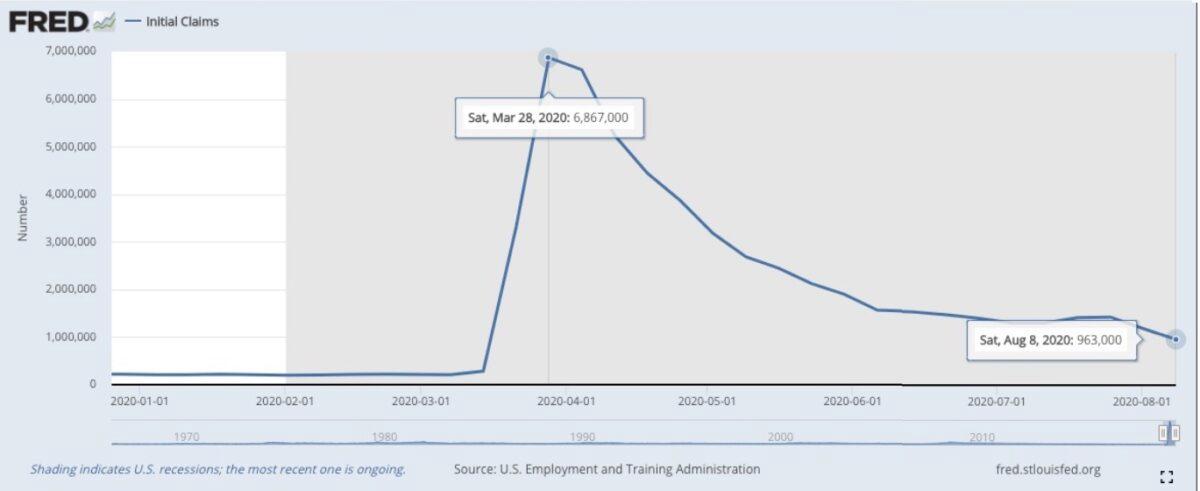The number of Americans filing jobless claims fell below 1 million for the first time since the height of the pandemic lockdowns in March, when weekly filings surged to an all-time record high of nearly 7 million.
Claims peaked at a record 6.867 million in mid-March, as the pandemic-driven lockdowns delivered a historic blow to the U.S. economy. In the second quarter of this year, U.S. economic output fell at its steepest pace since the Great Depression.

Economists polled by Reuters expected 1.12 million weekly claims, so the news comes as a surprise to the upside. Markets met the news with tepid enthusiasm, however, with the benchmark S&P 500 and Dow Jones dipping as of midday on Aug. 13, as the drop in weekly claims may be driven by the expiration of the $600-per-week pandemic jobless supplement that likely discouraged some from filing claims.
After congressional and White House negotiators failed to reach a deal on the fifth stimulus package, which was to include some form of an extension to the jobless supplement, President Donald Trump on Aug. 8 signed an executive order prolonging the weekly payout, but reducing it to $400. Republicans have repeatedly urged a downscaling of the $600-a-week payment, arguing that it’s so generous as to discourage many people from seeking work, a form of labor market distortion that harms small businesses the most.

The jobless claims report also shows that the number of people receiving benefits after an initial week of aid, a metric known as continuing claims, fell to 15.49 million in the week ending Aug. 1 from 16.09 million. Another bright spot in the report was that the total number of people receiving unemployment in all programs dropped by more than 3 million in the week ending July 25, coming in at 28.26 million. In the comparable week in 2019, there were 1.69 million people receiving unemployment benefits, a stark difference that shows the depth of the economic fallout.
The upward dynamic of labor market recovery is widely seen as straining against a surge in COVID-19 infections in parts of the country. Boston Federal Reserve President Eric Rosengren said Aug. 12 that as long as the potentially deadly bug poses a significant threat to Americans’ health, any economic rebound will be limited.
Since March, Congress has authorized about $3.6 trillion in new spending to help American families and businesses weather the fallout, with economists widely crediting the relief for minimizing the damage to the U.S. economy.





